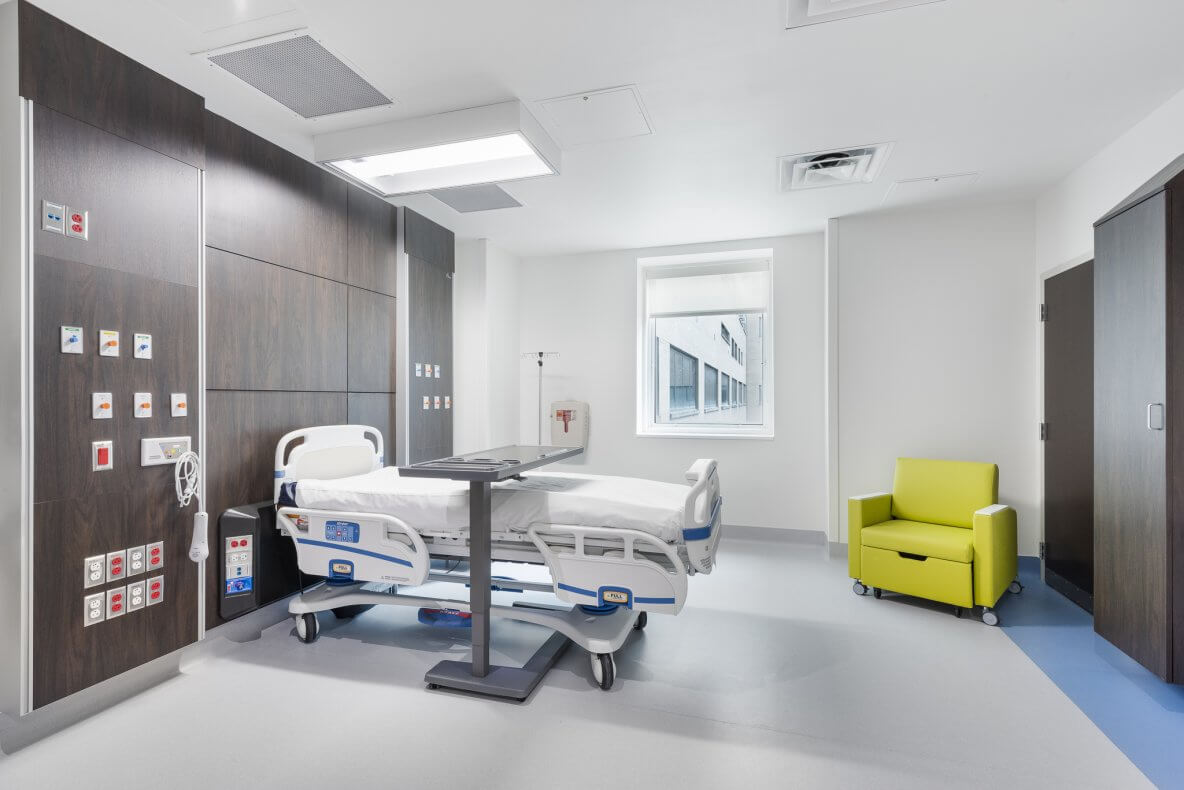Losing 30 percent of capacity is challenging for any hospital, but it’s devastating for one of the largest public hospitals in the Southeast. When a 24″ HVAC chilled water pipe burst on the 7th floor, flooding four floors, and compromising more than 200 patient beds, McKenney’s was asked to join the team that assessed the damage, stop the leak and perform repairs.
The first challenge was protecting the health of patients, staff and construction crews during an extensive gut-and-rebuild—while the entire nation battled a pandemic. McKenney’s employed clear
and concise policies to meet COVID-19 safety recommendations, and crews used risk elimination cards (RECs) to push safety awareness.
The McKenney’s team divided the large project into smaller, individual projects so multiple crews could work efficiently and simultaneously. The team strategically managed every component of the recovery, including the demolition of active life support and infection isolation equipment. Every section of ductwork and piping was studied to understand how each branch was connected to the overall support structure.
McKenney’s conducted “look-ahead” meetings and used method of procedure (MOP) forms and processes to plan critical activities and share regular updates with hospital stakeholders—so all parties knew precisely when projects were planned and the impact they’d have on the rest of the hospital.
The team leveraged multiple advanced technologies, including in-house 3D laser scanning and BIM coordination, to simplify complex tasks. All mechanical systems were modeled in virtual spaces to ensure accuracy. The team used SmartSheet and OpenSpace to document progress, which helped them address issues remotely, improve quality and reduce project costs.
The newly renovated floors were completed nearly one month ahead of schedule. Crews worked more than 30,000 hours without a single safety incident or documented COVID-19 case.
THE CHALLENGE
- Stop massive pipe leak and assess damage
- Manage gut-and-rebuild recovery efforts without affecting rest of hospital
- Protect health of patients, staff and crews during renovation and pandemic
THE SOLUTION
- Divide large project into smaller, more manageable projects
- Implement clear safety processes and look-ahead meetings
- Use advanced modeling technologies offsite to simplify work onsite
THE RESULTS
- Restored hospital to full capacity
- Completed renovation nearly one month ahead of schedule
- Zero safety incidents or documented COVID-19 cases






